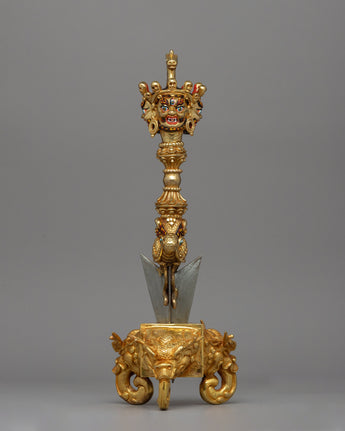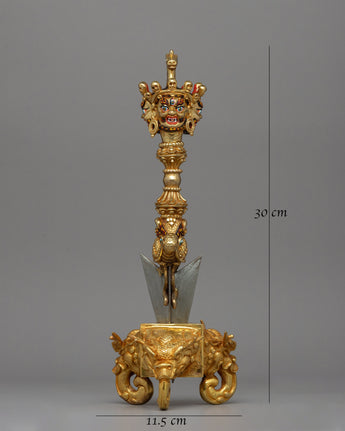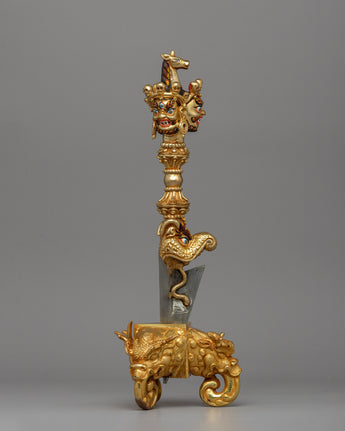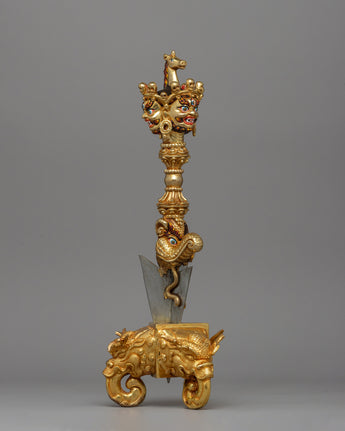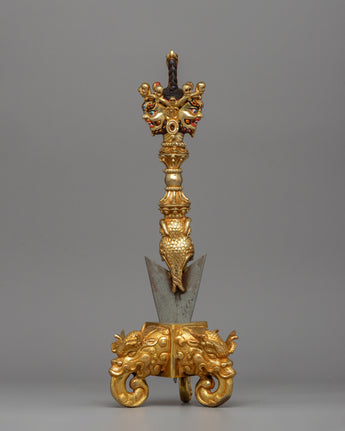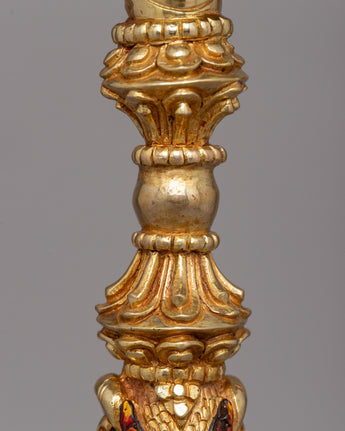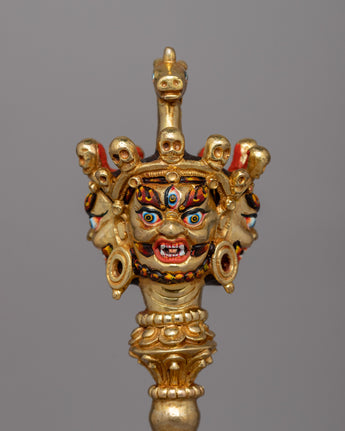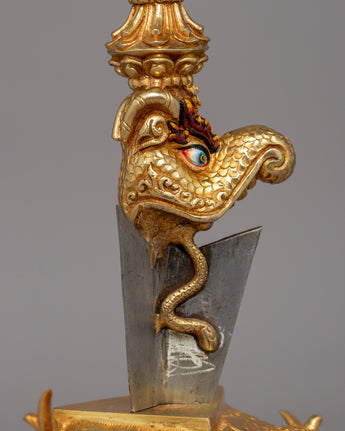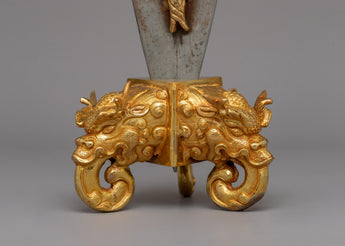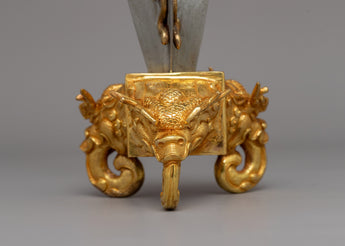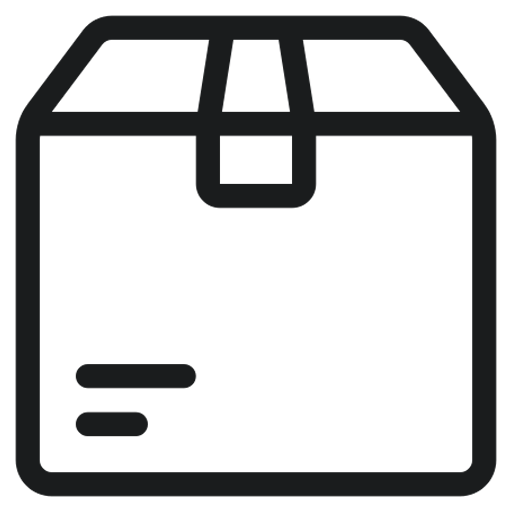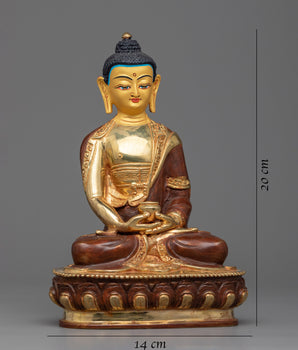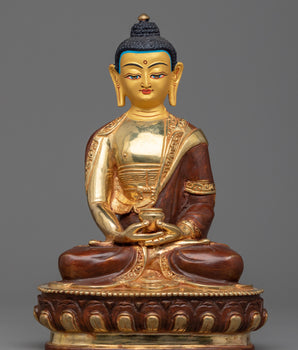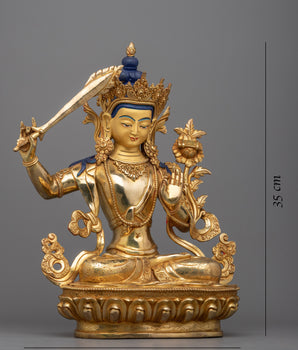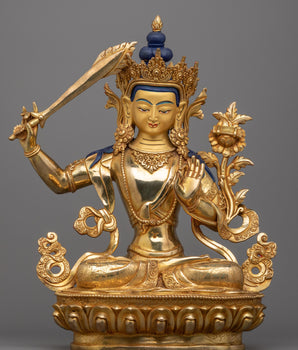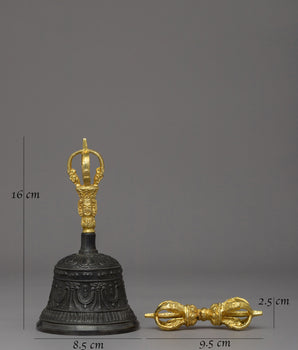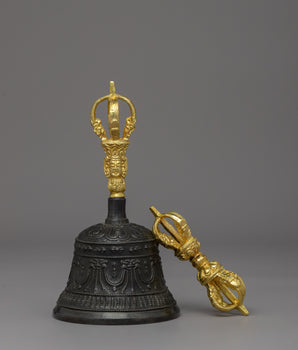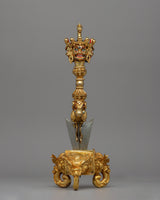
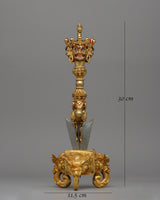
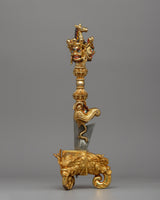
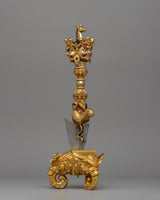
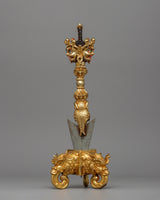
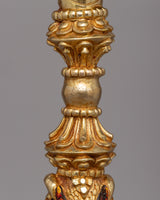
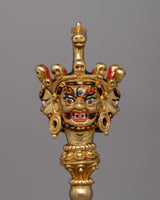
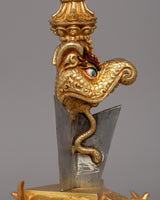
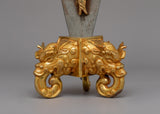
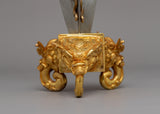
Buddhist Phurba with Iron Blade | Gold-Plated Copper Ritual Dagger

100% AUTHENTIC

HANDMADE

FREE SHIPPING
Buddhist Phurba with Iron Blade - Gold-Plated Copper Ritual Dagger
--------------------------------------------
Size: 30cm(Height) x 11.5cm(Width)
Weight: 1.30kg
Material: Copper Body, Gold Plated, Iron, Artificial Stone: Turquoise, Coral
--------------------------------------------
About The Ritual Item:
This stunning Buddhist Phurba with an Iron Blade is a profound symbolic weapon used in Vajrayana Buddhism to eliminate negativity and connect spiritual energy. Handcrafted from gold-plated copper, it has an iron blade that represents the removal of illusions and impediments. Its elaborate embellishments, including imitation turquoise and coral stones, add to its aesthetic and spiritual worth.
The Phurba, also known as the Vajrakilaya dagger, symbolizes the power of change and the wisdom required to defeat ignorance and bad forces. The three-sided blade represents the elimination of the three poisons—attachment, aversion, and ignorance—and the vajra-topped hilt connects it to divine energy. This sacred item, used in Buddhist rituals and meditation activities, is thought to symbolize spiritual intent and provide protection.
This gold-plated Tibetan Phurba, a symbol of spiritual strength, is ideal for rituals and energy purification and is used as a Buddhist altar relic. Whether utilized for meditation, ceremonial acts, or as a Himalayan decorative item, it encourages a strong sense of purity and history in any setting.
Introduction To The Phurba :
The ceremonial dagger (Sanskrit: Kila; Tibetan: phurba) is important for expelling evil and is thought to be especially effective in neutralizing the forces that obstruct Tantric Buddhist practice. It has ancient origins, first appearing in the Indian Rg Veda as the core blade of the vajra used by Indra to destroy the primordial cosmic snake Vritra. Kila, a peg or stake in Sanskrit, was most likely associated with Vedic sacrifices. Meditation on the Vajrakila Tantra, an early Indian scripture first promoted in Tibet in the eighth century by Padmasambhava, one of the founding teachers of Tibetan Buddhism, is used to invoke the three-headed Vajrakila Buddha.
How to set up your own Buddhist Shrine?
Find a clean, quiet, and uncluttered spot.
Please set up an altar table, and cover it with an altar cloth that calls to you
Place your sacred item (statue, thangka, or a picture of Buddha) at the center


